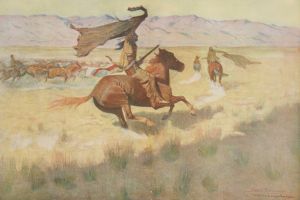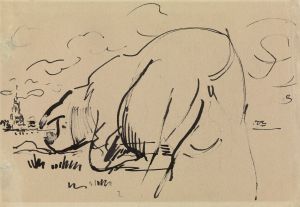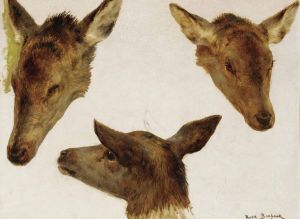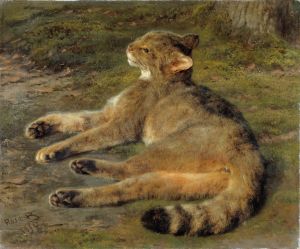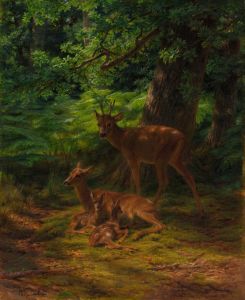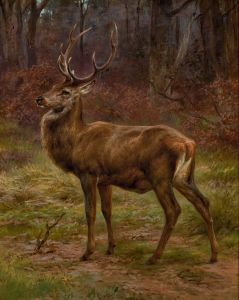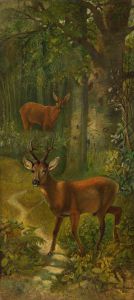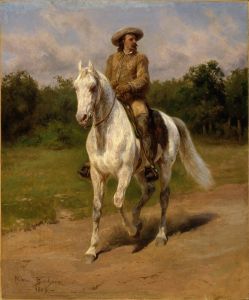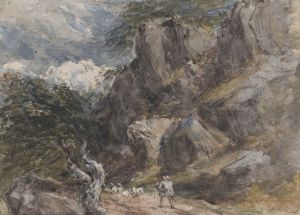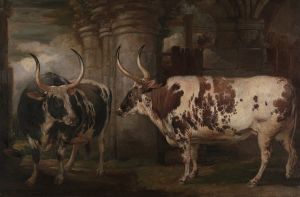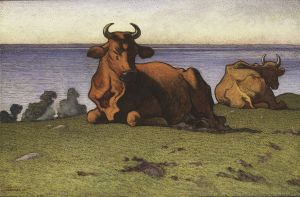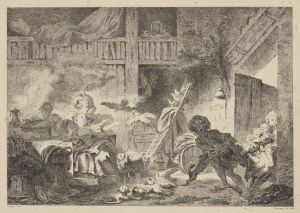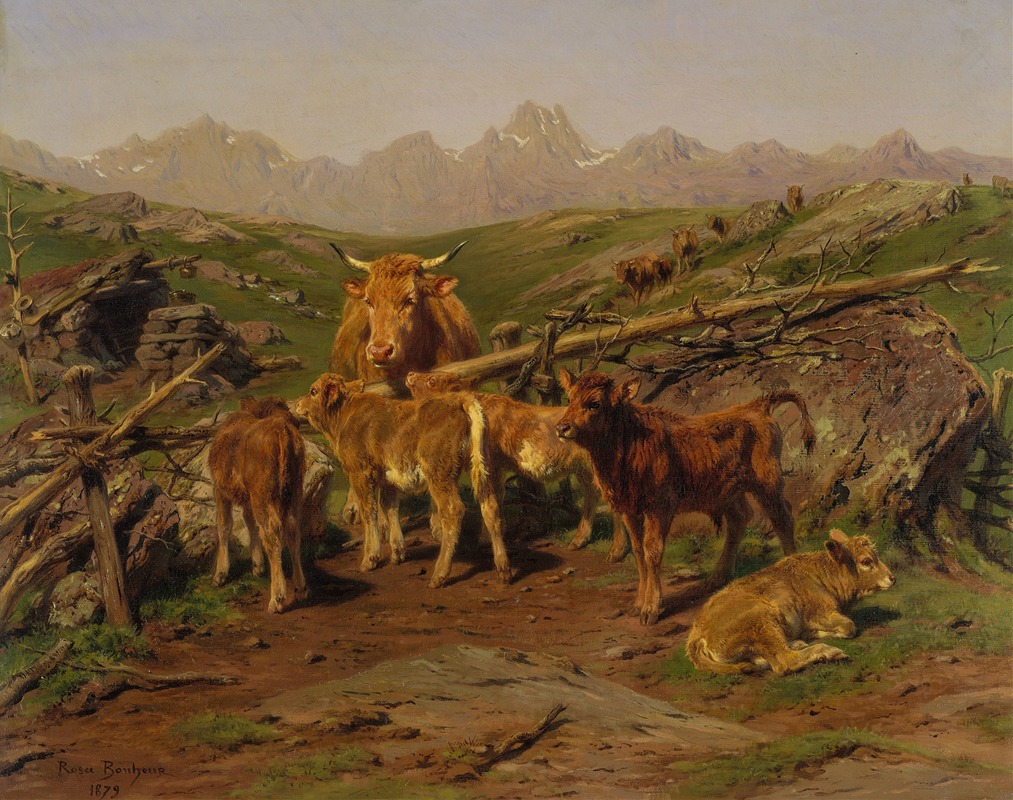
Weaning the Calves
A hand-painted replica of Rosa Bonheur’s masterpiece Weaning the Calves, meticulously crafted by professional artists to capture the true essence of the original. Each piece is created with museum-quality canvas and rare mineral pigments, carefully painted by experienced artists with delicate brushstrokes and rich, layered colors to perfectly recreate the texture of the original artwork. Unlike machine-printed reproductions, this hand-painted version brings the painting to life, infused with the artist’s emotions and skill in every stroke. Whether for personal collection or home decoration, it instantly elevates the artistic atmosphere of any space.
Rosa Bonheur, a renowned French artist of the 19th century, is celebrated for her realistic depictions of animals and rural life. Among her notable works is "Weaning the Calves," a painting that exemplifies her meticulous attention to detail and her deep appreciation for the natural world. Bonheur's ability to capture the essence of animal life with both accuracy and empathy has earned her a prominent place in art history.
"Weaning the Calves" is a testament to Bonheur's skill in portraying the subtleties of animal behavior and the pastoral scenes of rural France. Although specific details about the painting's creation, such as its exact date and dimensions, are not widely documented, the work is consistent with Bonheur's broader oeuvre, which often focused on the daily lives of animals and their interactions with humans.
Bonheur was born in Bordeaux, France, in 1822, into a family of artists. Her father, Oscar-Raymond Bonheur, was a landscape and portrait painter who encouraged her artistic pursuits from a young age. Rosa Bonheur's upbringing in a creative environment, combined with her passion for animals, greatly influenced her artistic direction. She often visited farms, slaughterhouses, and fairs to study animals in their natural settings, which informed her realistic and dynamic portrayals.
Throughout her career, Bonheur was committed to breaking the conventions of her time, both in her personal life and in her art. She often wore men's clothing, which allowed her greater freedom to move and work in environments that were typically male-dominated. This choice, along with her decision to remain unmarried and focus on her career, marked her as a pioneering figure for women in the arts.
"Weaning the Calves" likely reflects Bonheur's interest in the themes of growth and separation, common in rural life. The weaning process, a significant moment in the life of farm animals, involves separating calves from their mothers to transition them to solid food. This scene would have resonated with Bonheur's audience, many of whom were familiar with the rhythms and challenges of agricultural life.
Bonheur's work was well-received during her lifetime, and she achieved considerable fame and financial success. Her paintings were exhibited widely, and she became the first woman to receive the Grand Cross of the Legion of Honor in France. Her dedication to realism and her ability to convey the dignity and individuality of animals set her apart from many of her contemporaries.
Today, Rosa Bonheur's legacy continues to be celebrated, and her works are held in high regard by art historians and animal lovers alike. "Weaning the Calves," like many of her paintings, serves as a window into the 19th-century rural world and highlights the enduring bond between humans and animals. Bonheur's contributions to art have paved the way for future generations of female artists, and her paintings remain a testament to her talent and vision.





